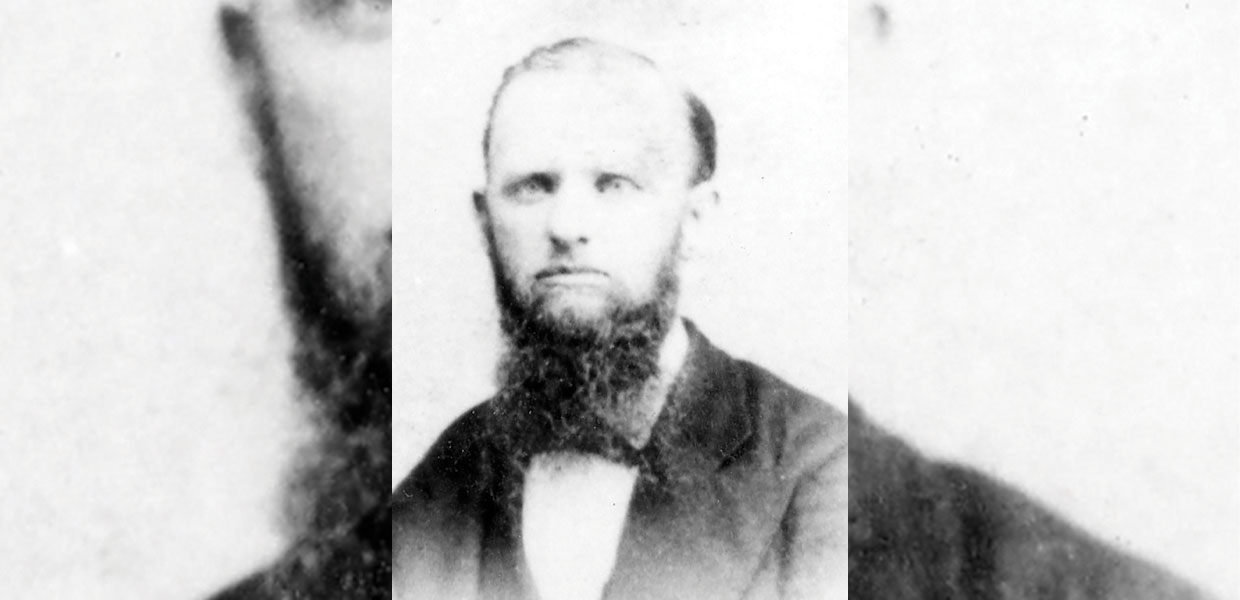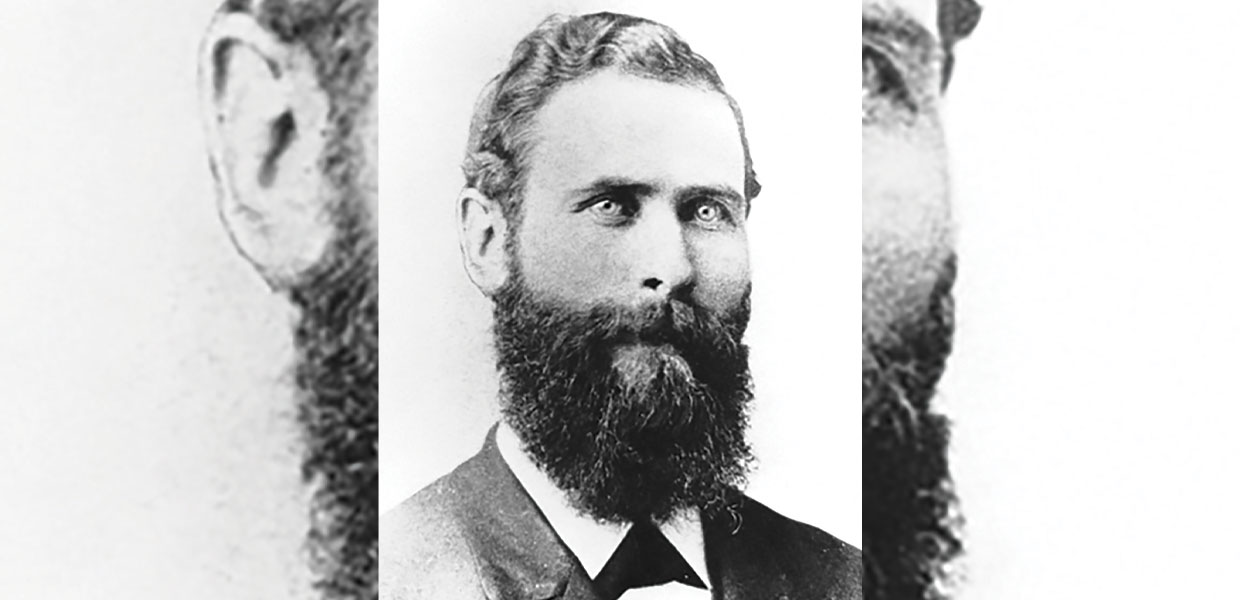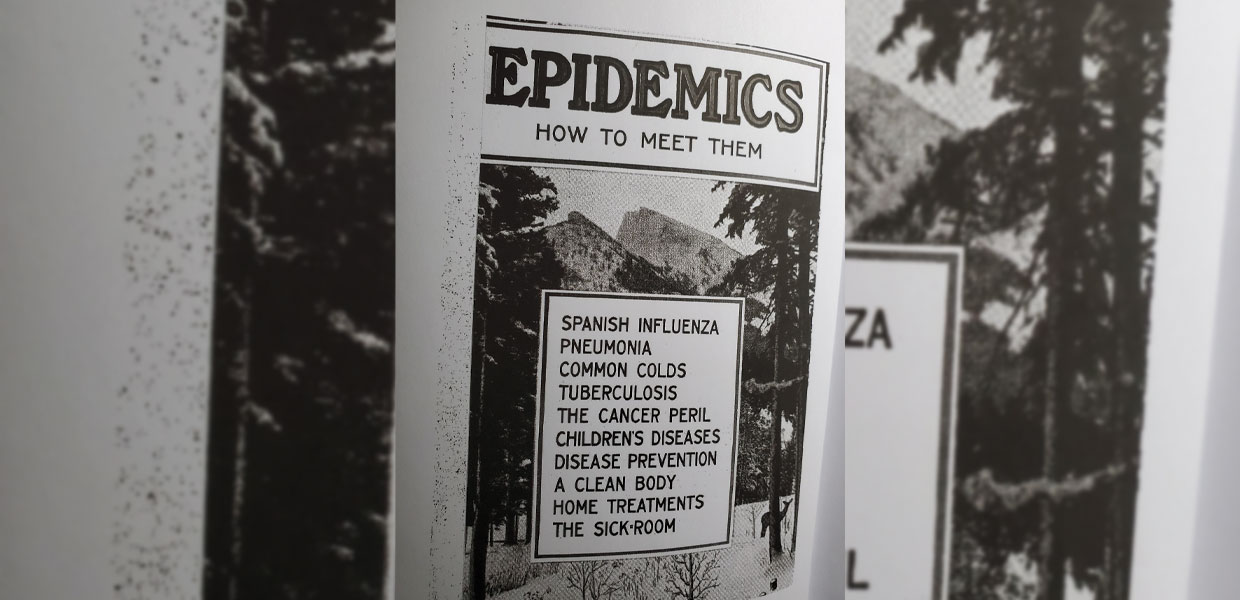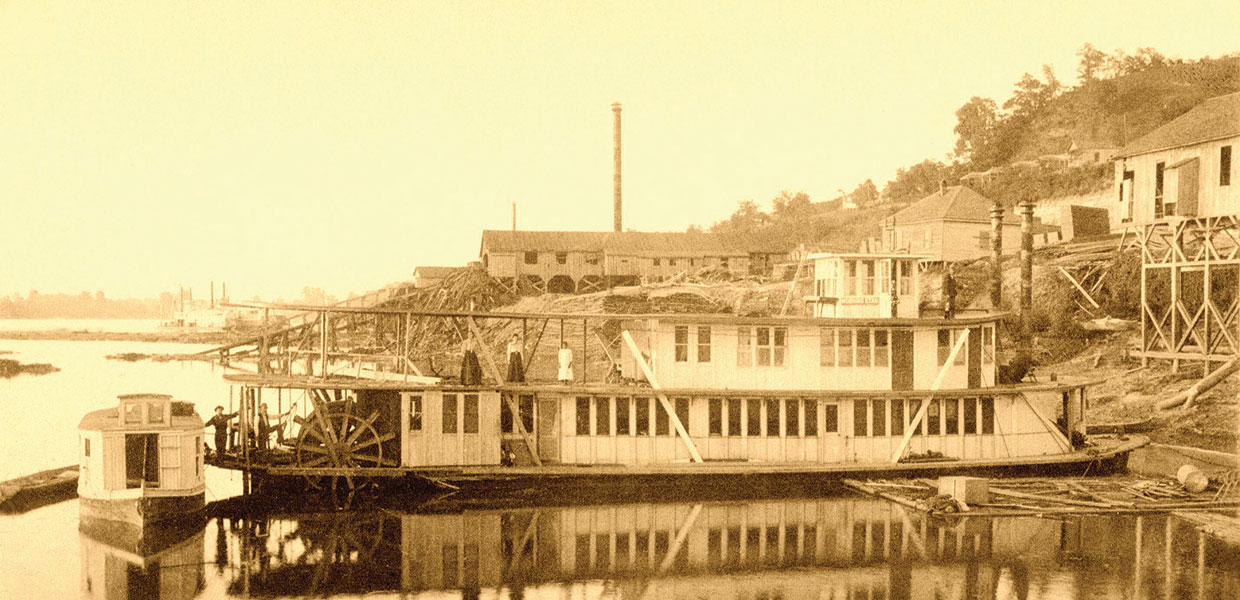Before the South heard the first Adventist preacher, silent preachers arrived, convicting hearts and converting souls. And, these silent Gospel books and tracts have been preaching in the Southern Union territory for more than 150 years. Join us now as we look at the procession of printed preachers and people who have carried the Gospel.
Imagine being an Adventist who lives up North, who sees an ad in the Advent Review that said, “Packages of Tracts,” Advent Review and Sabbath Herald, January 14, 1868, p. 79. You respond by ordering the tracts and sending them to a rural village in the post-war South called Edgefield Junction, Tennessee.
We don’t know who sent the tracts to Edgefield Junction, but we do know the powerful effect they had on that community. When Elbert Lane, the first Adventist minister to preach in the South came to preach an evangelistic meeting, he reported, “After a few days’ preparation, I came to this place, Edgefield Junction, near Nashville, Tennessee. Here are a few keeping the Sabbath who desire baptism. They embraced the truth from reading publications, having never heard a discourse from one of our ministers,” The Advent Review and Herald of the Sabbath, May 2, 1871.

Ellen G. White saw the power of the printed page when she wrote in 1880, “Our publications are now sowing the Gospel seed, and are instrumental in bringing as many souls to Christ as the preached word. Whole churches have been raised up as the result of their circulation,” Review and Herald, June 10, 1880.
In 1874, the General Conference Committee formally organized the General Conference Tract and Missionary Society of Seventh-day Adventists, later renamed The International Tract and Missionary Society (ITMS). It encouraged every member to be involved in the wide distribution of literature. In 1882, ITMS agents and branches were working in Bladon Springs, Alabama (C. O. Taylor), Edgefield Junction, Tennessee (C. Owens), and Knob Lick, Kentucky (J. B. Forest), per the Seventh-day Adventist Yearbook, 1883, p. 5.
In 1883, a report for 1882 was given covering Kentucky and Tennessee. It shows the Kentucky Conference with 84 total members, of which 43 were International Tract and Missionary Society members. They distributed 28,425 pieces of literature, along with 1,418 periodicals. The Tennessee Conference had 54 total members, of which 40 were ITMS members. They distributed 1,192 pieces of literature, along with 1,349 periodicals, per the Seventh-day Adventist Yearbook, 1883, p. 39.
While the International Tract and Missionary Society agents were making headway giving away literature in the South, canvassers were on the move selling literature in the North, East, and West areas of the United States in the 1880s and 1890s. Canvassers, later known as colporteurs and literature evangelists, filled their briefcases with tracts, pamphlets, periodicals, and books, and went out knocking on doors, making friends, introducing their publications, taking orders, and praying for their customers. The relationships they made led to Bible studies and prepared people for meetings, baptisms, and new church plants.
In 1885, two canvassers came to the Atlanta field to sell Gospel literature, George King and Charles F. Curtis of Iowa. Curtis returned to the North full of enthusiasm, and came back to the South with his bride in 1887 to continue working for the Lord.
1n 1888, the General Conference sent companies of canvassers to the South to see if they could be successful selling books there. The results reported at the 1889 General Conference session were so positive that they pushed canvassing forward in those areas, General Conference Bulletin, p. 4, 1889.
That year, canvassing state agents (similar to conference publishing directors today) were assigned to Alabama/Mississippi (Daniel Graber), Georgia (Chas Curtis), North Carolina (C. O. Wolf), and Tennessee (J. H. Dortch) to help organize the work. In 1889, A. F. Harrison was voted canvassing district agent, a position similar to today’s union publishing directors. He was assigned to assist the state agents in General Conference District 2, covering the South.
As the work grew in the South, The Review and Herald Publishing House opened a branch in Atlanta, Georgia, in 1889. Before the days of rapid transportation, it was considered an economy measure to establish depositories, or branches, in strategic areas, like Atlanta, for the more convenient distribution of books.


In 1895, Edson White, took the Morning Star down the Mississippi River to Vicksburg, Mississippi, and began printing and distributing literature, especially for people of color. Connected with the steamer was a company of young men who canvassed using the publication The Gospel Primer. Edson wrote it to convey, in a clear, simple way, the messages of the Bible; help illiterate people to read; and to help finance his missionary venture. He and his canvassers canvassed cities along the river such as Ottawa, Illinois, and Memphis, Tennessee, and Friar’s Point and Greenville, Mississippi, having great success. By 1908, The Gospel Primer was reported to be in one million homes across North America. Edson also, through an onboard printing press, published a journal called The Gospel Herald, which encouraged and evangelized African-Americans in the South.
Edson established the Gospel Herald Publishing Company. He moved it to Nashville. It was taken over by the Church and renamed to the Southern Publishing Association in 1901. The Atlanta branch of the Review and Herald was brought into this location to strengthen operations.
When the Southern Union was organized in 1901, there were 65 canvassers in the South. In the newly organized Southern Union Conference, canvassers began distributing publications using a cash-on-delivery (COD) business plan. Orders were taken for books like The Coming King and Bible Footlights. Deposits were made by customers, contracts were drawn up, and these were shown to the Book Store manager, who would advance books to the canvassers during the delivery time. Once the customers paid, the books were delivered and the remaining amount owed to the company would be paid.
By 1907, the canvassing work was progressing in sales throughout the Union. According to the Report of Progress (a bi-weekly periodical that later became the Southern Tidings), August 13, 1907, there were 63 canvassing agents in the Southern Union, who delivered $3,560 worth of literature in the month of July. The books they sold included The Coming King, Bible Footlights, Seer of Patmos, Daniel and Revelation, New Testament Primer, Best Stories, Bible Readings, The Gospel Primer, and The Great Controversy.
God used church periodicals like The Report of Progress to keep the publishing ministry and its accomplishments before the members.
Earnest Haskell, a canvasser, reported how his work was progressing near Springville, Tennessee, in 1907. His report gives you a feeling of how these missionaries worked, made a living, and prepared the way for future soul winning efforts. He reported, “I have canvassed on Walden’s Ridge near Spring City. On the mountain delivery, I had a very unusual experience in this respect; I had 55 orders for miscellaneous publications, and delivered 112, or 200 percent. This surpassed anything I have ever known in my canvassing experience, not in value of orders, but in the percentage of books delivered. I find the people very kind and hospitable as a rule, and there are good openings for meetings in several localities,” Report of Progress, p. 14, July 16, 1907.
To get a glimpse of the experience of women canvassers during this period, B. A. Philpott wrote on July 2, 1907, “Have just finished canvassing this town (Fayetteville, Tennessee), and tomorrow will go to Lewisburg, Tennessee, to canvass that place. It has seemed to me while working here that this place was fully ripe and ready to receive our books. How many places are waiting to have the truths contained in our good books brought to them? The people here have treated me very kindly, and have wished me success as I leave this place for another town,” Report of Progress, page 5, July 2, 1907.
In 1919, during the period when the Spanish influenza took the lives of an estimated 50 million people around the world, The Review and Herald Association decided to publish a little health book called Epidemics: How to Meet Them. Canvassers and members sold the book for 25 cents. Between October 3, 1919, when the first copies came from the bindery, until December 25, 1919, the total sales amounted to 210,000 copies.
In the decades that followed, Southern Union Session sales reports made it clear that God was leading, providing for, and prospering our canvassers.

From 1902 to 1957, Southern Union canvassers worked on a cash-on-delivery business model. However, in January 1957, a new Home Health Education Service (HHES) pay-by-mail program was introduced by Eric Ristau, Southern Union publishing director, which he and Odell W. Mackey, associate director, developed.
With this program, the literature evangelist sells on credit and leaves his literature in the homes of the people immediately upon receipt of a small down payment. The balance of the account is collected by mail through the HHES office. The LE receives his commission in advance with a weekly check. The program became a success and in 1960, the Southern Union reached the $1 million mark in sales. The HHES top selling books have been The Bible Story Set, The Bible Reference Library, and the Health Sets. Presently, the HHES pay-by-mail headquarters is based in Dalton, Georgia.

In 1974, the publishing directors of the regional conferences in the Union —
Theodore Smith for South Atlantic Conference, and Joseph Hutchinson for South Central Conference — adopted a new ministry and business model called Family Health Education Service (FHES). FHES helped regional conference LEs to be more successful in both sales and soulwinning through more personal contact with customers, and updated collection practices. The FHES top selling books through the years have been Bible Readings for the Home, The Heritage Family Bible, Free At Last, and the Message magazine. E. Earl Cleveland, evangelist, wrote Free at Last, Ask the Prophets, and other message books with African American pictures and stories to help literature evangelists have more favor in Black communities.
The Union constructed a new Publishing HHES building next to its new Memorial Drive office in Decatur, Georgia, in 1974. The new building included plenty of space for storage and shipping of books, meetings, and publishing offices. With new models of business, new facilities, new books, dedicated leaders, strong administrative support, and new recruits, God blessed sales and baptisms from LE contacts to soar through the decades.
Adventist Book Centers (ABCs), formerly called Book and Bible Houses from 1925, have also been key players in literature ministry for decades in the Union. They have provided members with tracts, Bible studies, and books to share with their communities. Members have also been equipped with wholesome literature for their own holistic growth.
With the online ABC feature, www.adventistbookcenter.com, and the new store setups, the following statistics show the success our Adventist Book Centers have experienced by God’s grace.
Literature evangelism has thrived in the South, to a large extent due to strong student participation. Spiritual youth have used their energy and zeal for the Lord, to knock on doors and reach precious souls in public places. Thousands have signed up for Bible studies through the efforts of students. In 1996, Bill Beckworth, Southern Union publishing director, brought Larry Carter, youth publishing leader to the Southern Union leadership team. Carter was one of the founders of the new Magabook ministry model that has had much success for the past 25 years. Later, Rocky Davis was appointed as the youth publishing leader, and Magabook programs reached new levels of excellence with God’s help.
Publishing ministry has encountered many challenges through the years in and outside the Church. We’ve had to face no-soliciting ordinances, arrests, delinquent accounts, internet violations, racism, lack of support, cuts in leadership, cuts in subsidies, violence and fear in the cities, poor leadership, and unconverted workers. However, through it all, God has kept His army of literature workers advancing.
One family from Chattanooga, Tennessee, has contributed a combined 150 years plus in literature ministry. Brothers Theodore Smith and Robert Smith Sr., along with Robert’s sons, Robert Smith Jr. and Anthony Smith, have been used by God to win hundreds of souls, plant churches, and train literature evangelists around the globe. While Theodore and Robert Smith Jr. served as the Southern Union publishing associates for years, Robert Smith Sr. eventually served as the North American Division publishing director and the Review and Herald Publishing House president. Two of the churches this family publishing team helped raise up are the Decherd, Tennessee, Church, and the Mountainside Church in Decatur, Georgia.
For the past 41 years, Alfredo Gonzalez, originally from Cuba, has served as a literature evangelist and leader in the Florida Conference. The Lord blessed him and his team to baptize hundreds of souls and to plant three churches in Miami, with help from Fernando Pauli, pastor, and Fausto Rodriquez. The three churches are Hialeah Springs Spanish Church, Miami Beach Spanish Church, and Normandy Spanish Church, often referred to as, “The LE Church.” Literature evangelist Carmen Perez was also instrumental in getting the Miami Beach and Normandy churches started. The method that Gonzalez used was to have group canvasses in an area where there was no Seventh-day Adventist church. The literature evangelists and Bible workers would follow up on the interests generated from the LEs, and then the pastor would partner with them, leading to baptisms and a church plant.
For the past 150 years, God has led out in His publishing ministry. Business models have changed, some methods have changed, many books have changed, and leadership models have changed, but God and His mission for literature evangelists and church members have never changed.
With our Southern Union Publishing BLAST Initiative voted in 2013, our emphasis is now on expanding the vision of literature evangelism to include the full spectrum of publishing. Components include total member involvement, technology, small sharing literature, big books and periodicals, free and sold literature, part time workers, full time workers, and student workers. Along with engaging Union and conference publishing leaders, the BLAST Initiative has more than 60 BLAST event coordinators who are helping to reach the masses gathered together at large events. We encourage you to join our teams and make an investment of your time, energy, and resources to make a difference where you live.
We thank God and show the warmest appreciation for all of our literature ministers! Through the efforts of these faithful workers through the years, the Southern Union has reached millions, baptized thousands of blood-bought souls, and raised up many churches for the glory of God! Who knows how many will spend eternity with Christ because you did what you could in sharing the love of Jesus.
For more information on how you can get involved, contact your conference’s publishing director.
Additional content for the October cover feature will be available at www.southerntidings.com
Southern Union | October 2021


